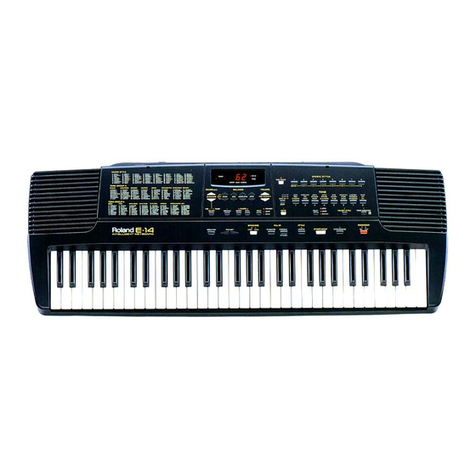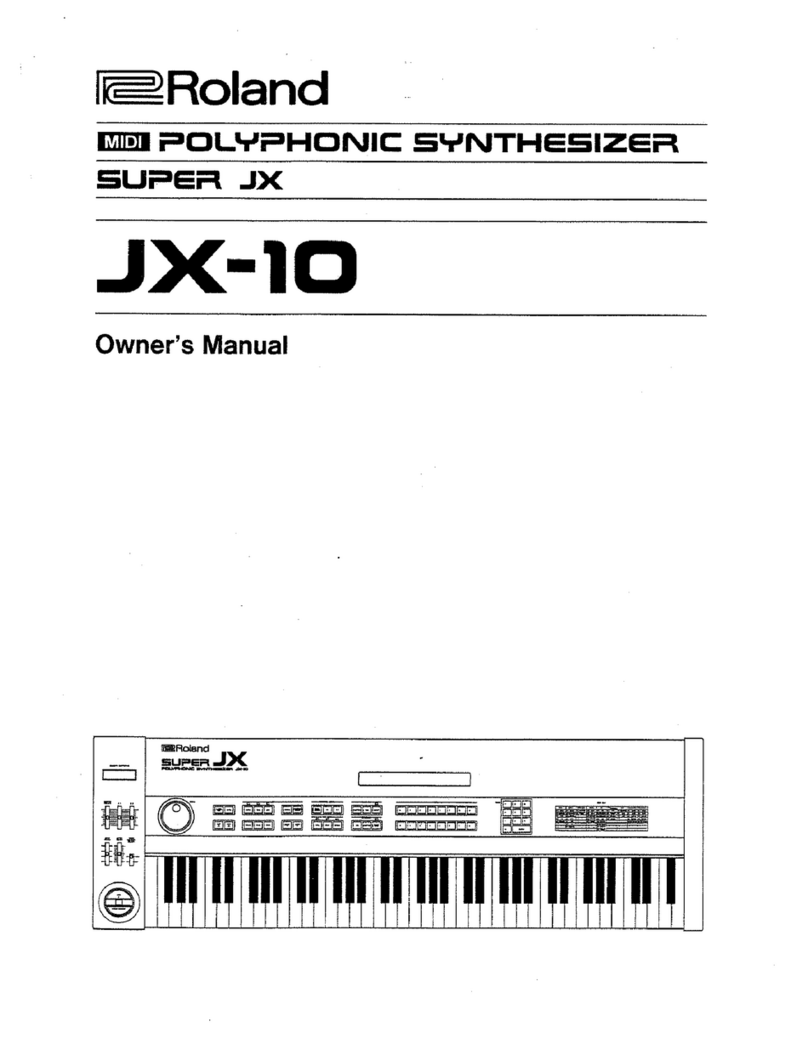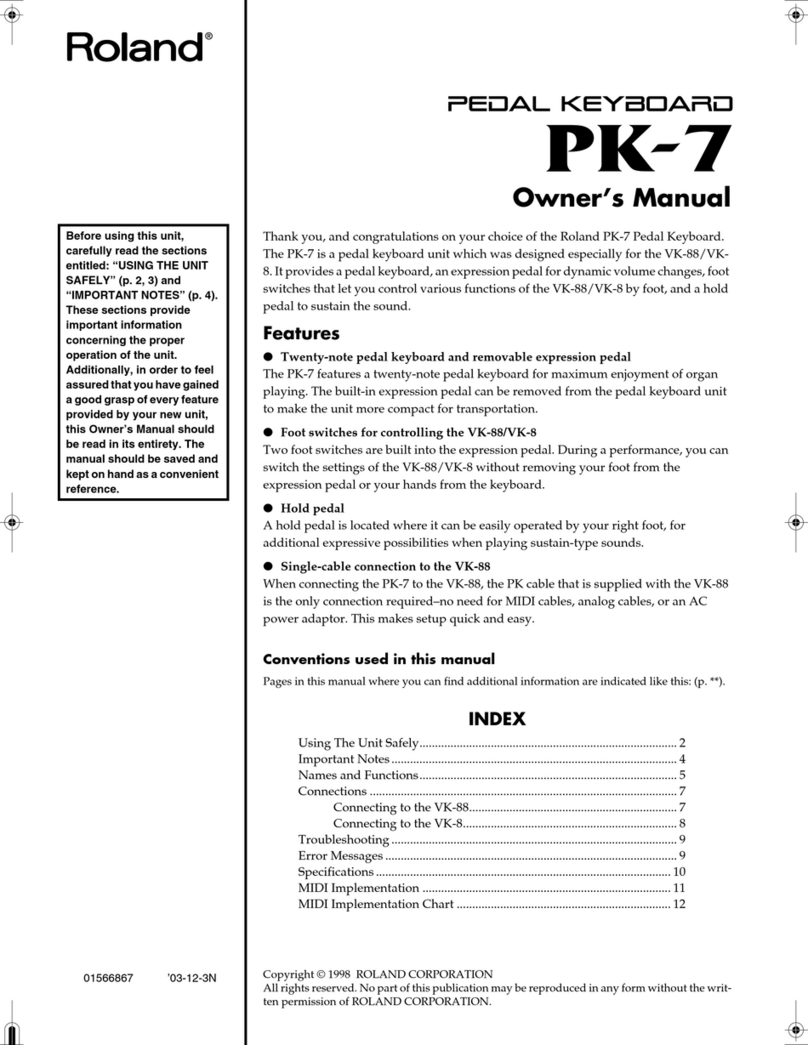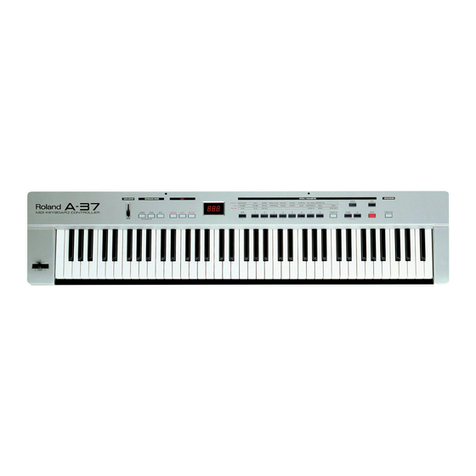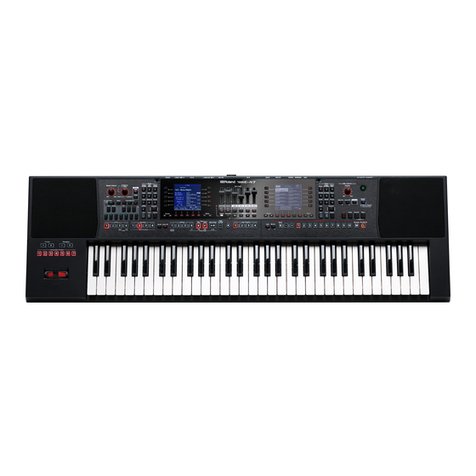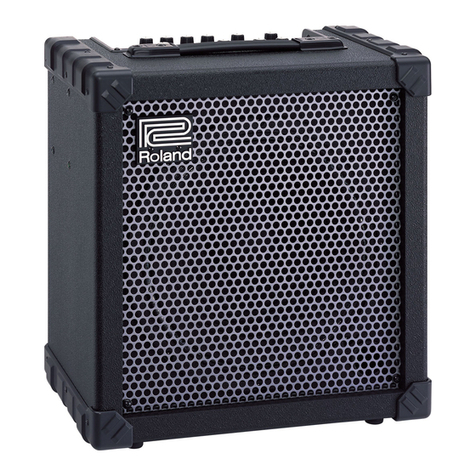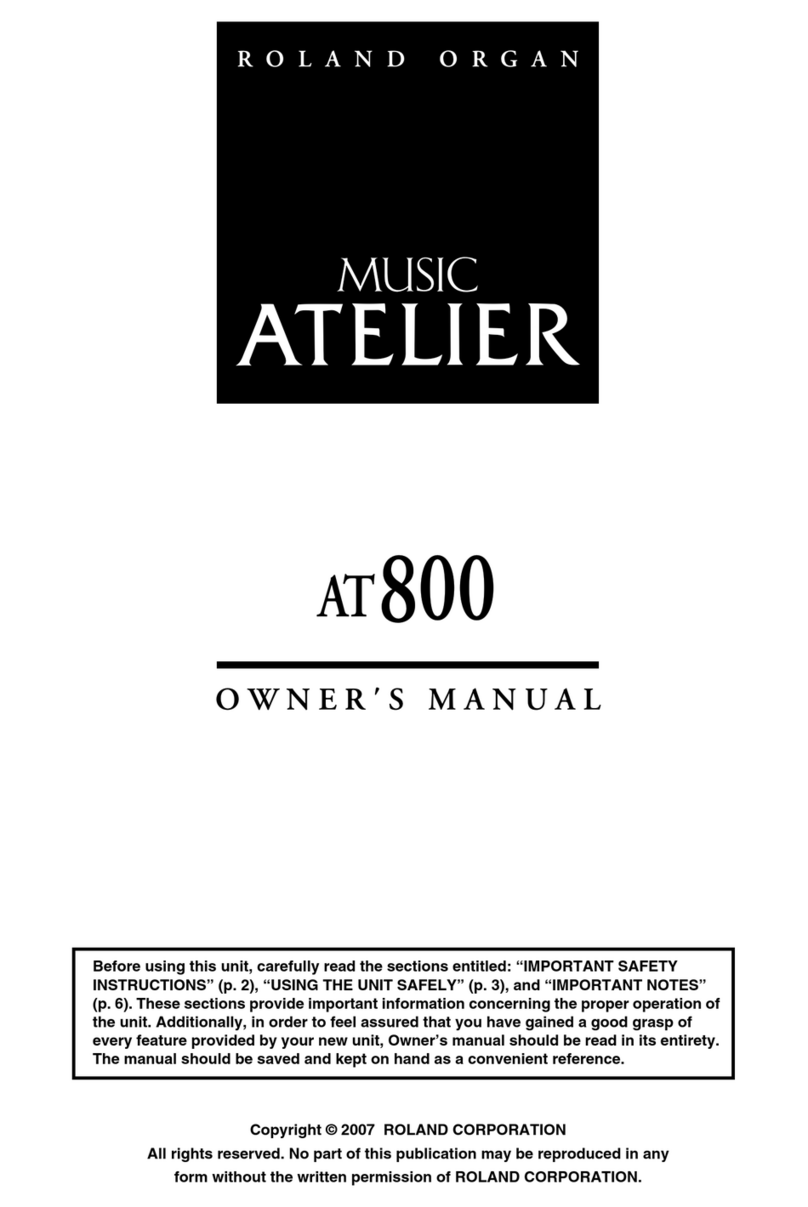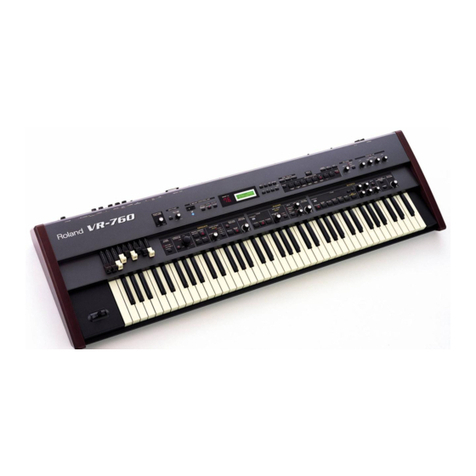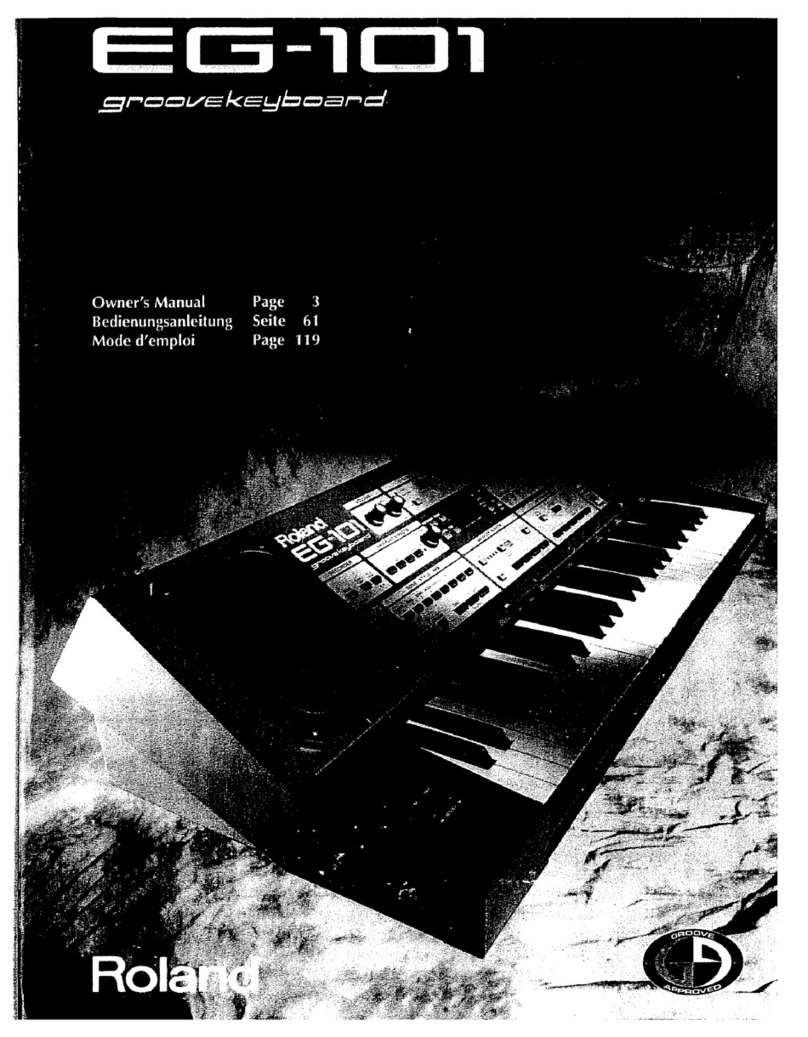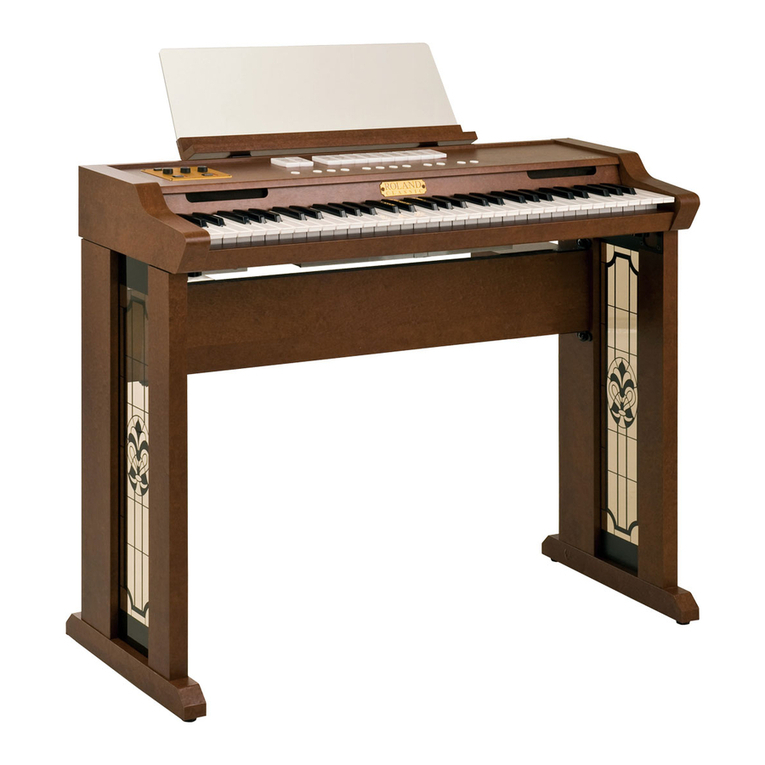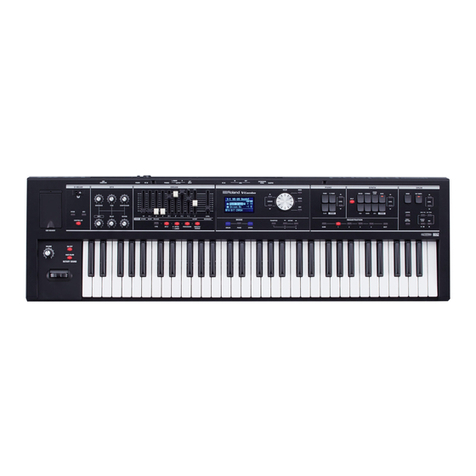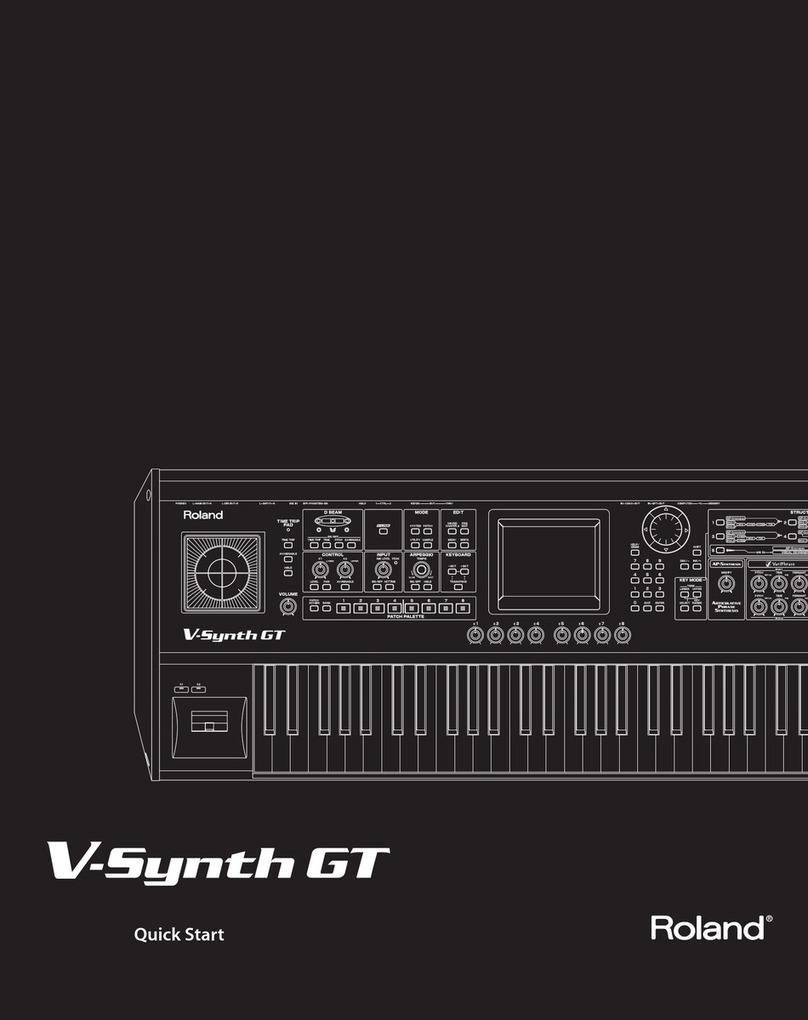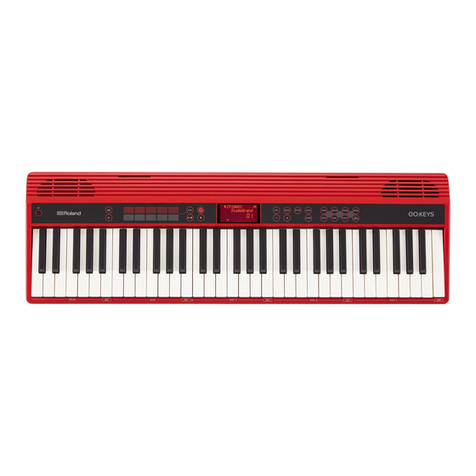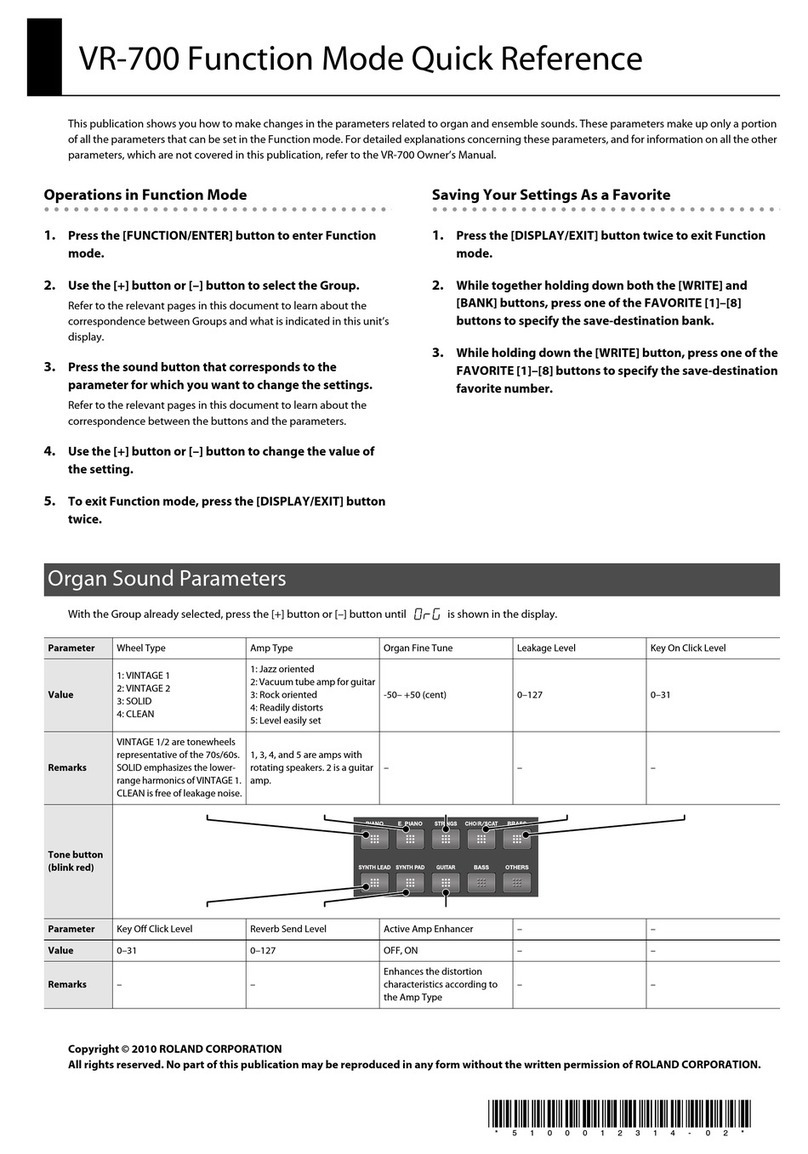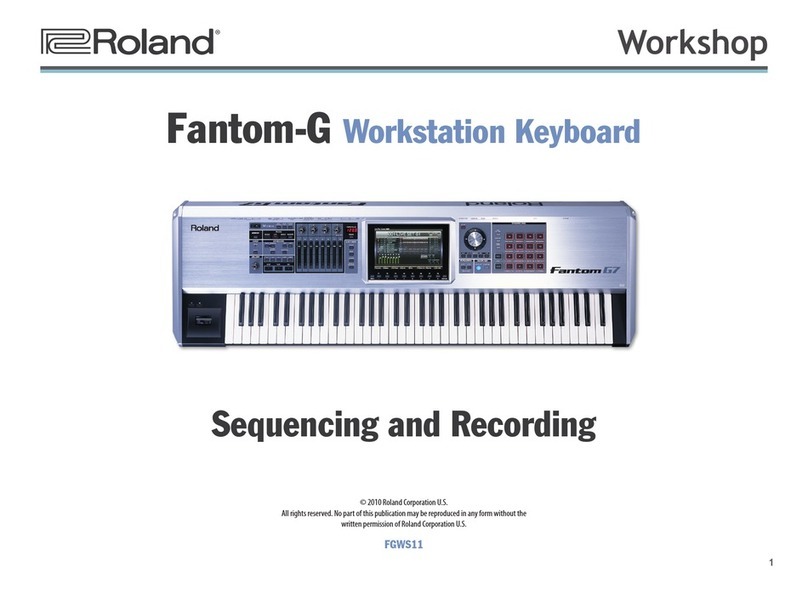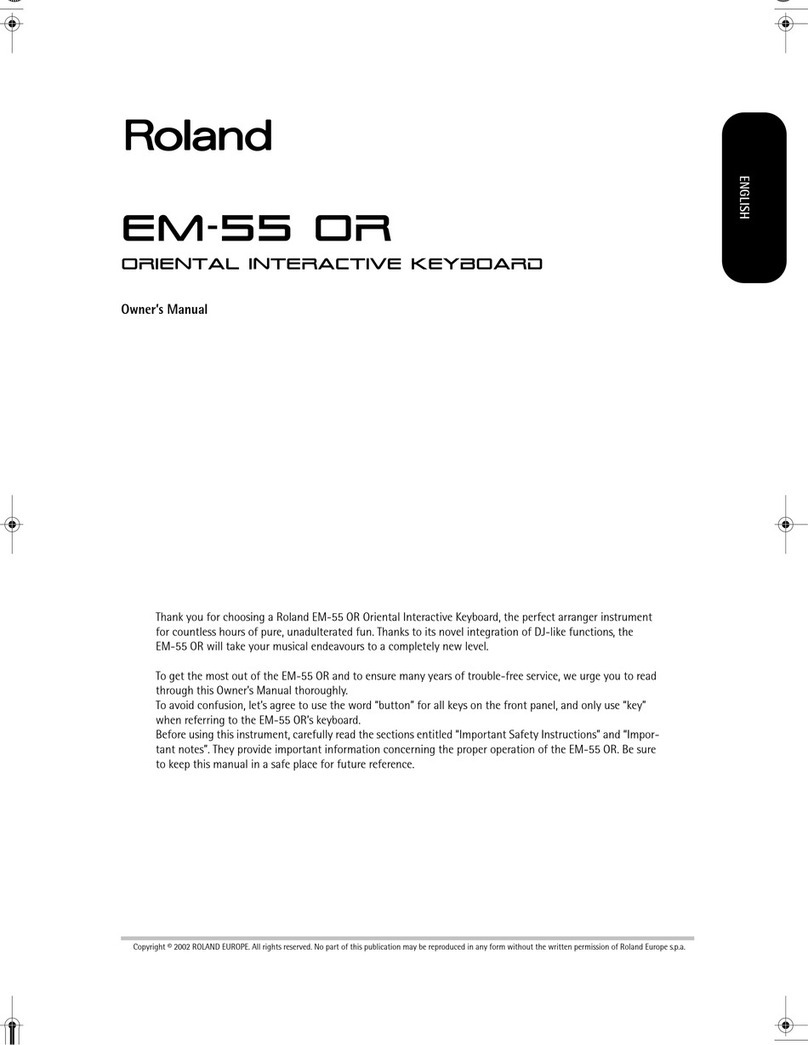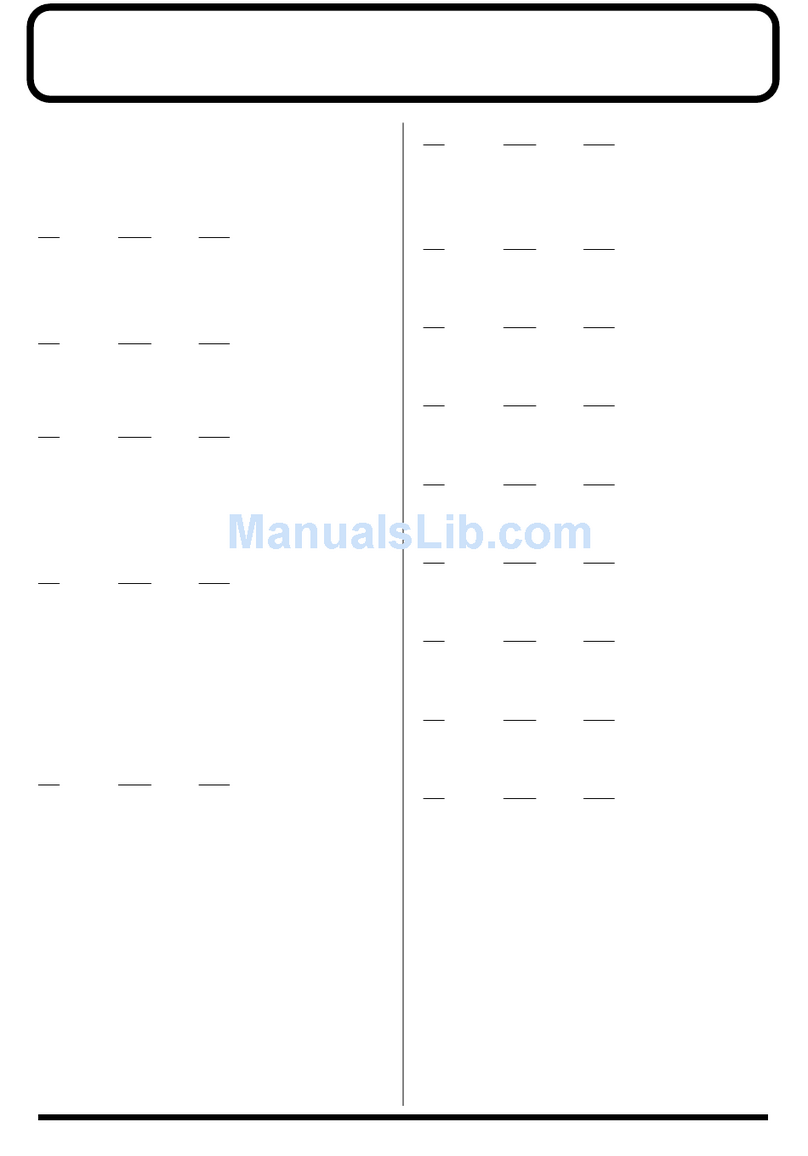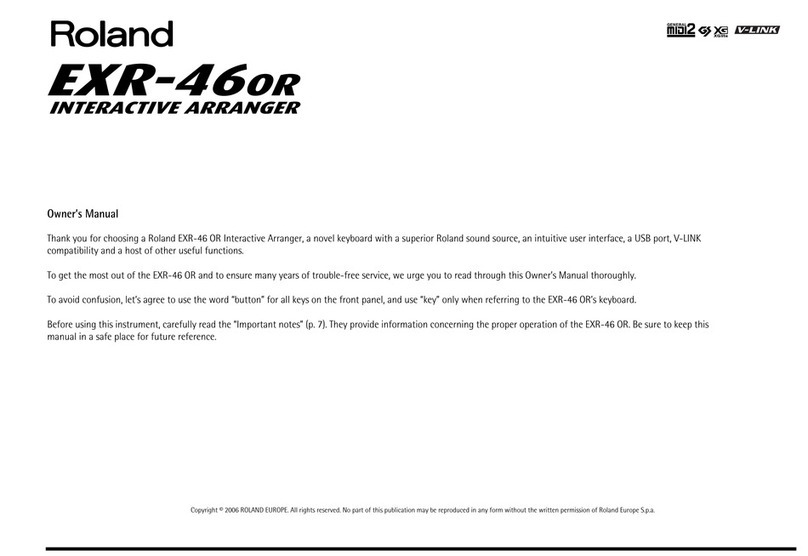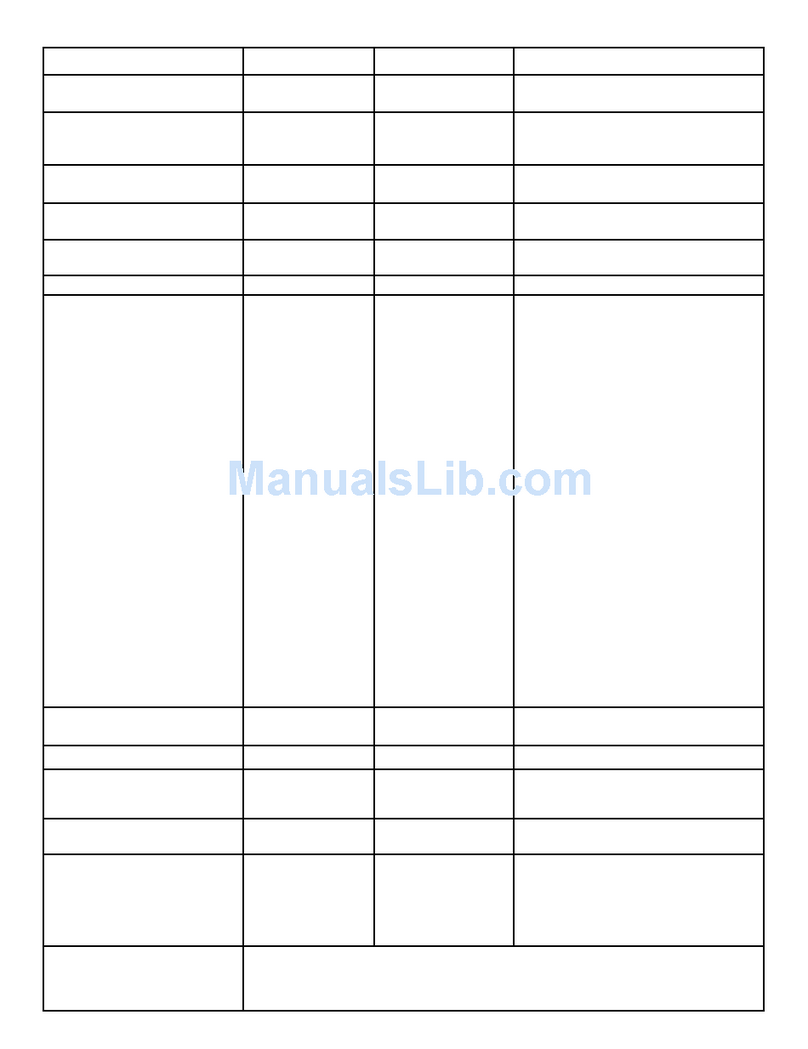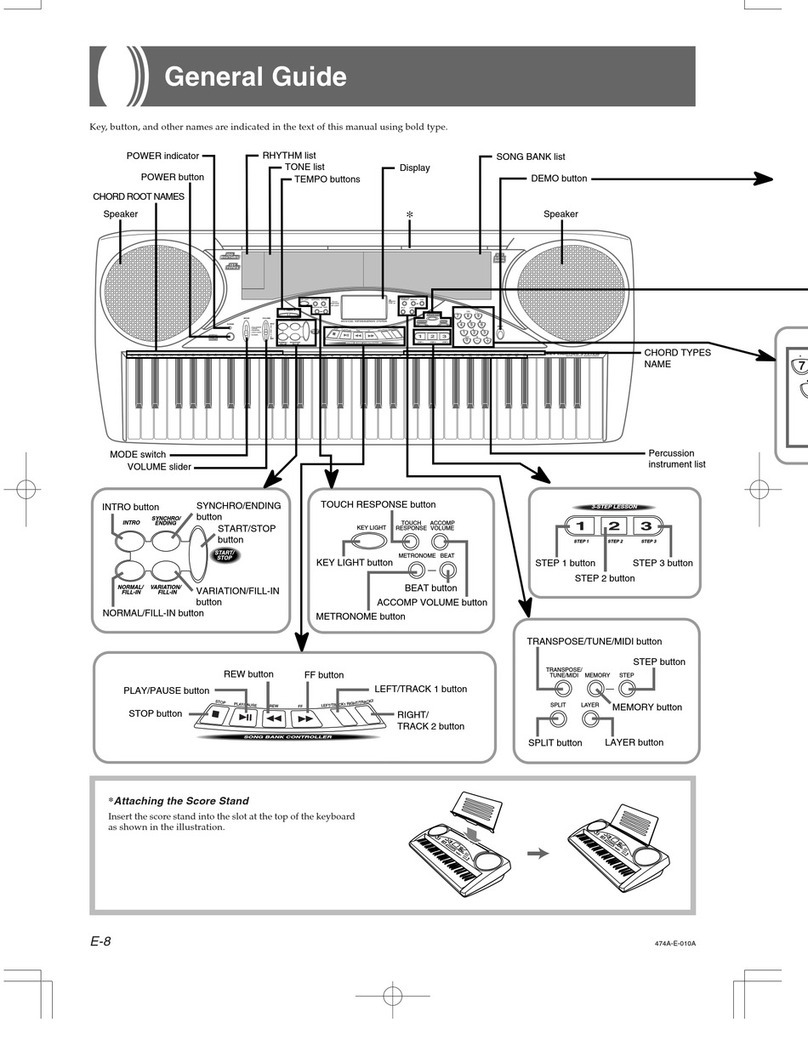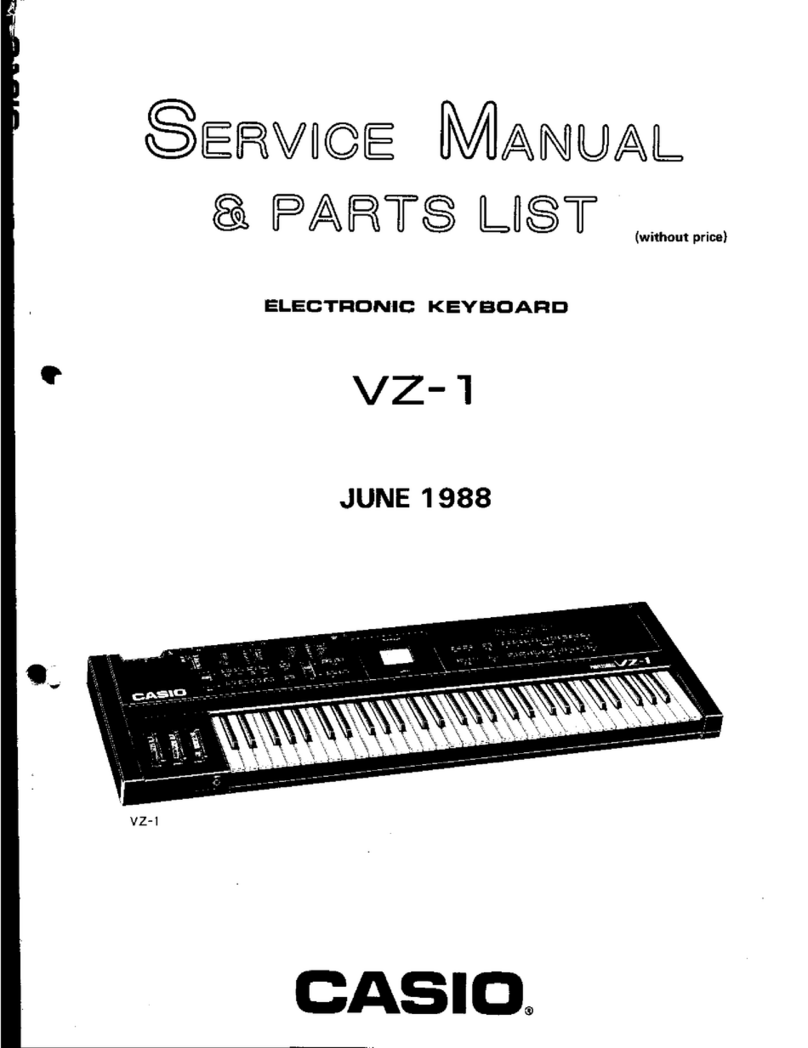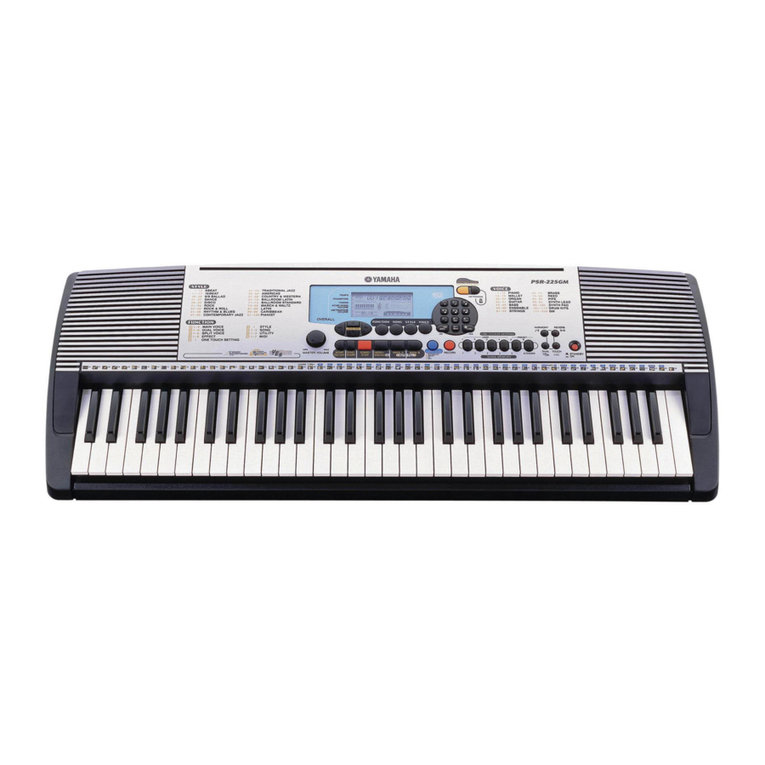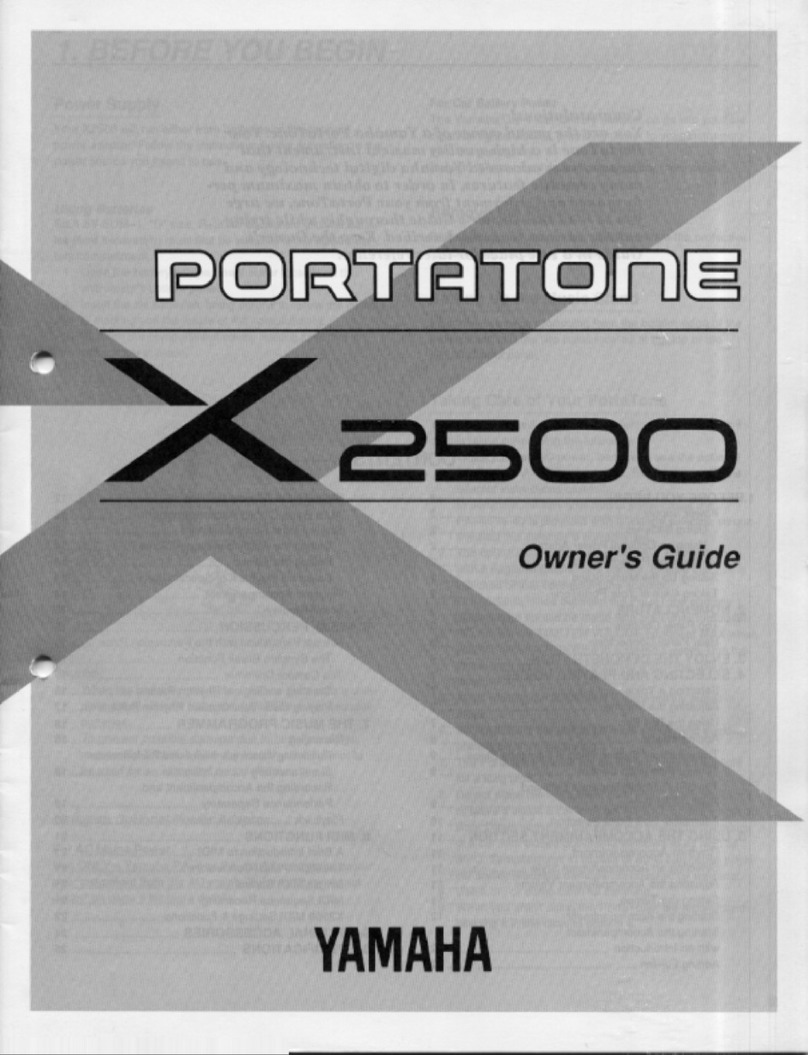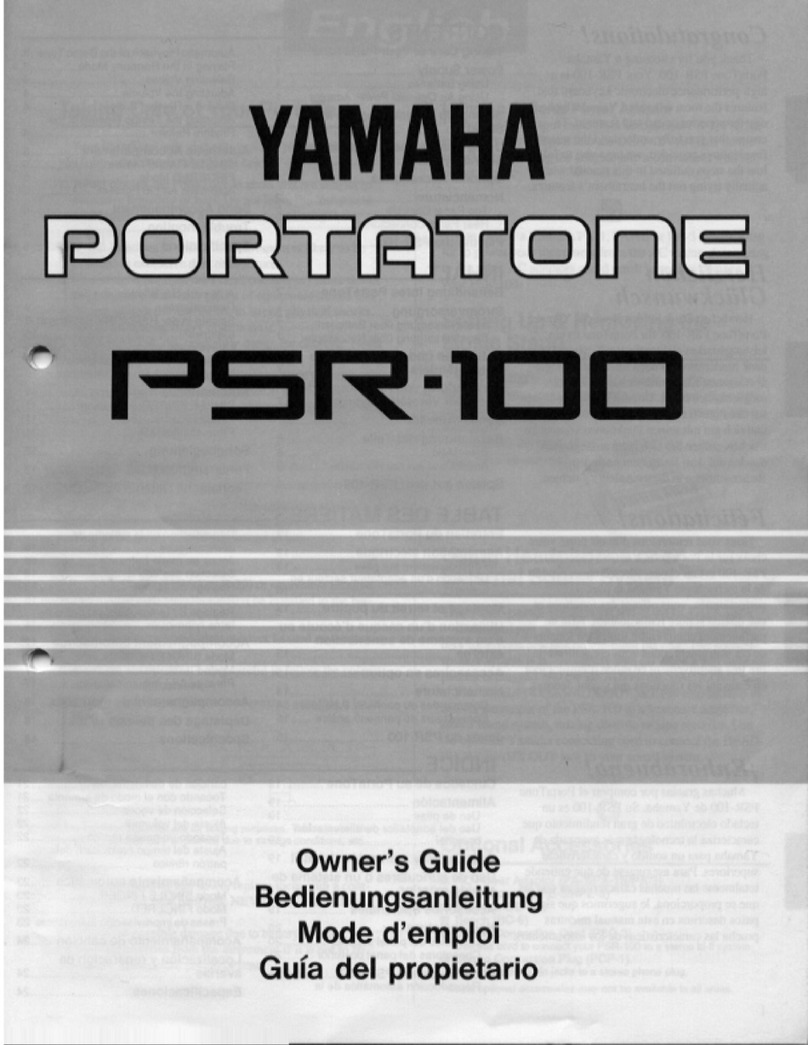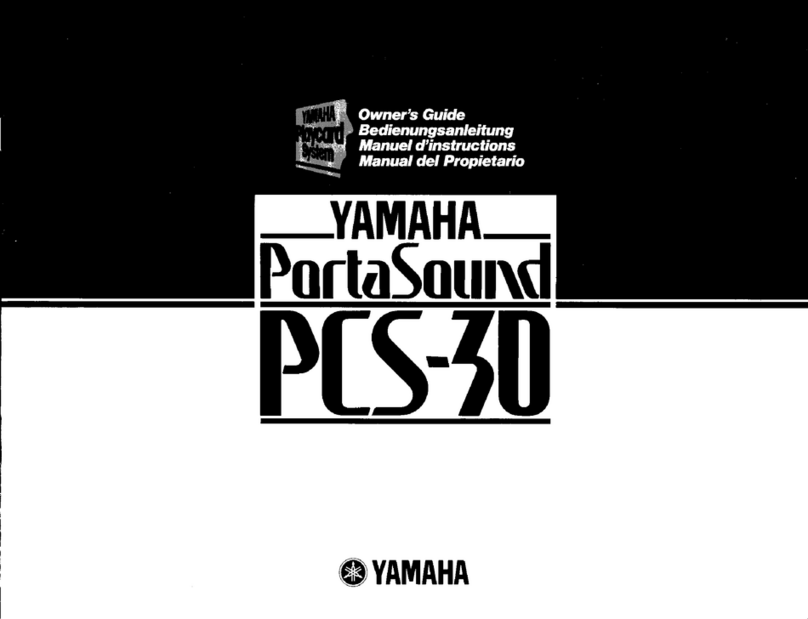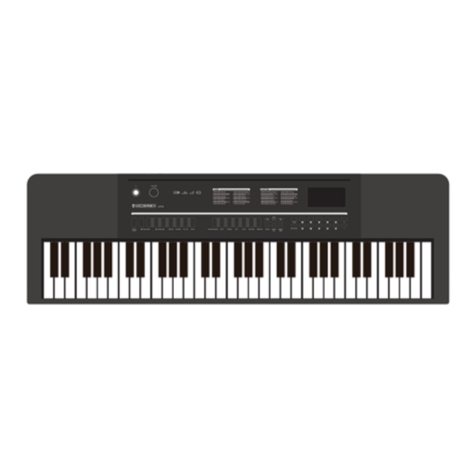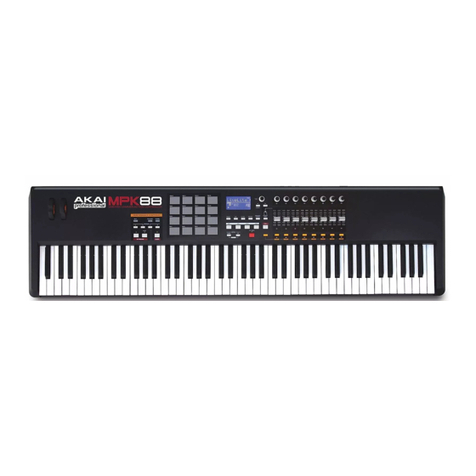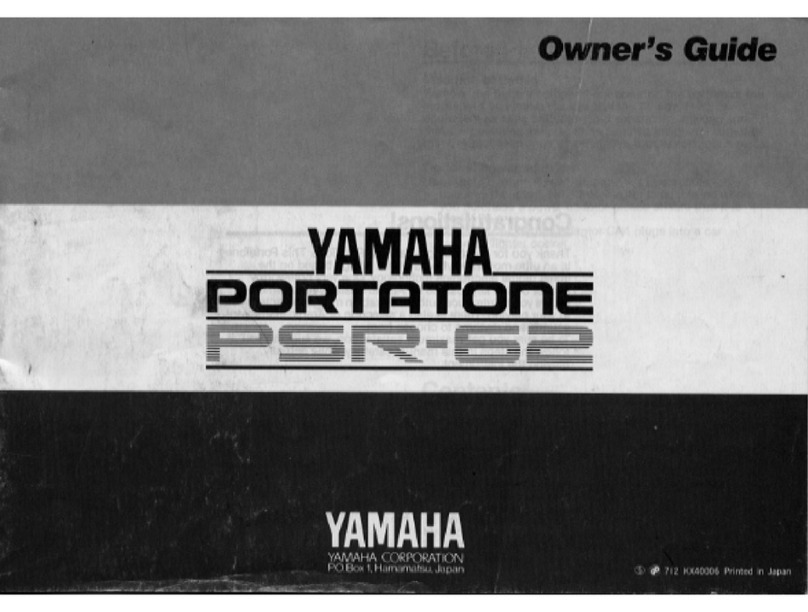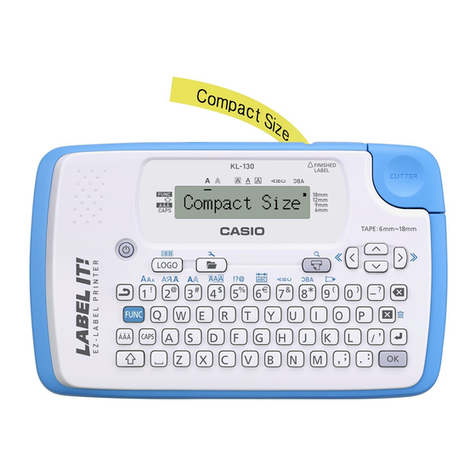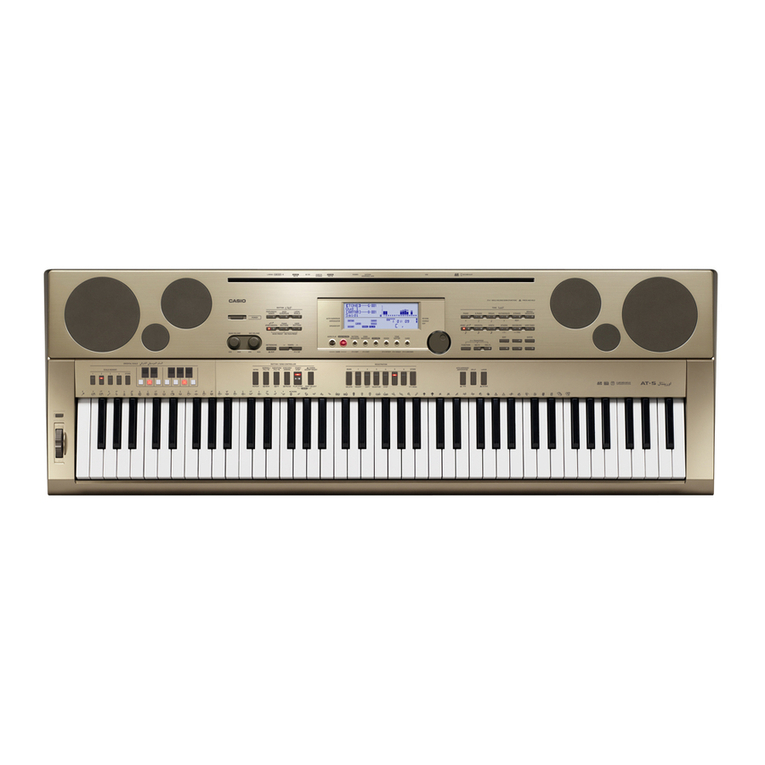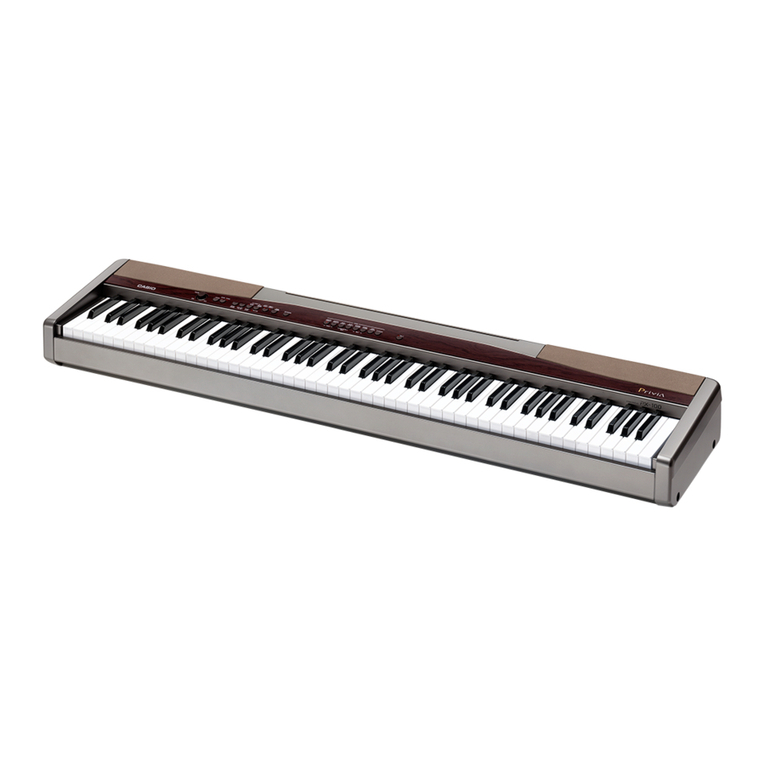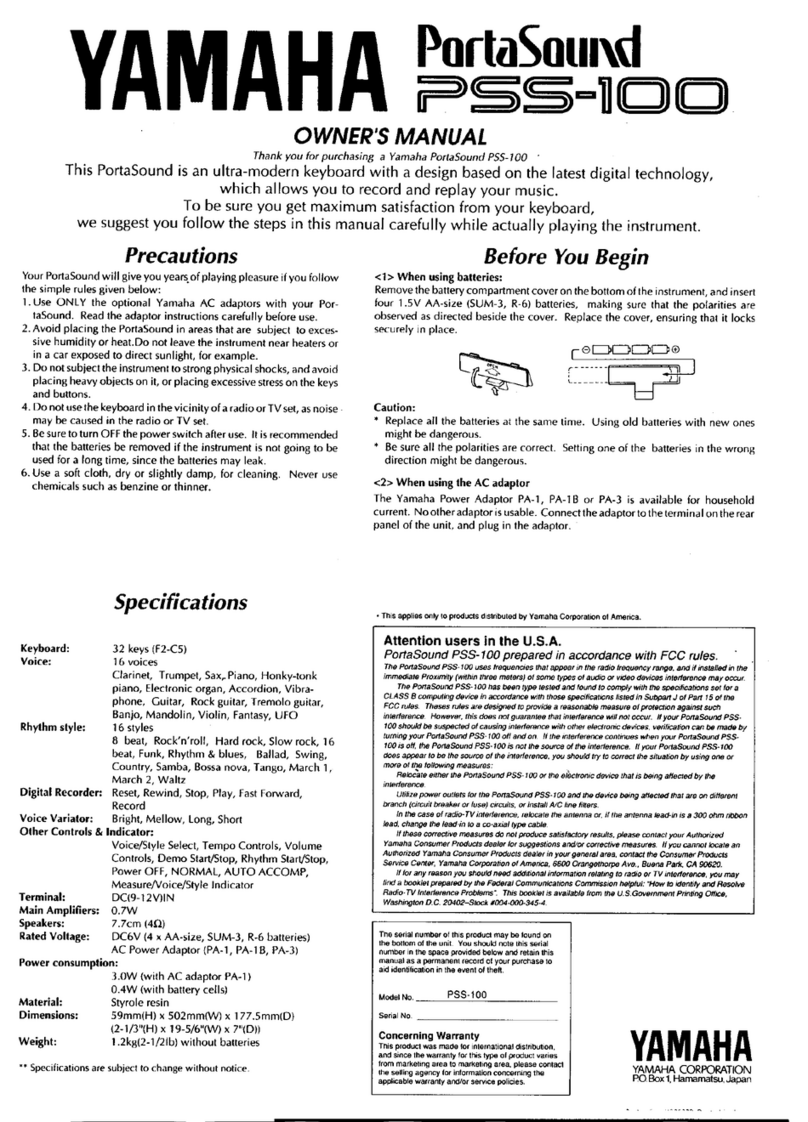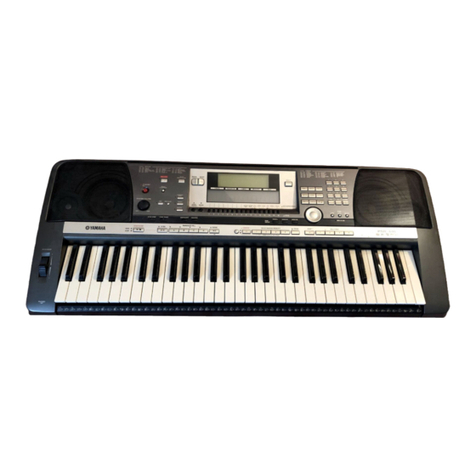
2
Contents
Introduction.................................. 3
:An Overview of the JUPITER-Xm ................ 3
Panel Descriptions ........................... 4
:Top Panel .................................... 4
:Rear Panel (Connecting Your Equipment)............... 6
:Bottom Panel................................. 8
Installing the Batteries........................... 8
:Turning the JUPITER-Xm On .................... 8
Turning Off the Power ........................... 8
:Adjusting the Overall Volume (Master Volume) ....... 8
:Using the Built-In Speakers..................... 8
Using the Scene Function (SCENE).............. 9
:Recalling/Saving a Scene....................... 9
:Scene Edit ................................... 9
:Using Performance Functions................... 9
:Performing with a Connected Pedal ............. 9
Selecting and Playing Tones (MODEL BANK) ..... 10
:Selecting a Tone .............................. 10
Assigning the Desired Model or Category to the [1]–[16]
Buttons ...................................... 10
:Using the Performance Functions ............... 10
:Performing with a Connected Mic (Vocoder) ........ 10
Adjusting the Mic Settings ....................... 11
Editing the Sound (TONE EDIT) .................. 12
:Basic Editing Operations ....................... 12
:OSC (Oscillator) ................................. 12
:FILTER . . . . . . . . . . . . . . . . . . . . . . . . . . . . . . . . . . . . . . . 12
:LFO (Low frequency oscillator) ....................... 12
:ENVELOPE ................................... 12
:EFFECTS ..................................... 12
:Saving a Sound You’ve Created (WRITE)............ 12
Using I-ARPEGGIO ............................ 13
:Turning the Arpeggio On/Off ................... 13
:Continuing the Arpeggio Even After Releasing Your
Hand (I-ARPEGGIO HOLD) .......................... 13
:Selecting the Arpeggio Type.................... 13
:Selecting the Type of Rhythm................... 13
:Changing the Arpeggio Tempo ................. 13
:Automatically Changing the Arpeggio
(PLAY DETECTOR)................................. 13
:Editing Individual Steps of the Arpeggio Perfor-
mance (STEP EDIT) .............................. 14
Using Step Edit Data for Arpeggio Performance....... 14
Using the Bluetooth® Functionality .......... 15
:Using the JUPITER-Xms Speakers to Hear Music
from a Mobile Device .......................... 15
Registering a Mobile Device (Pairing) ................ 15
Connecting an Already-Paired Mobile Device ........ 15
Playing Music from the Mobile Device .............. 15
:Using the JUPITER-Xm to Control a Mobile Device . 15
Using the JUPITER-Xm as a MIDI Keyboard for a Music
App ......................................... 15
:Differentiating Multiple JUPITER-Xm Units
(Bluetooth ID) ................................... 16
:Disabling the Bluetooth Functionality ........... 16
Connecting External Equipment ............. 17
:Connecting a Computer (USB COMPUTER Port) ........ 17
Installing the Dedicated Driver .................... 17
Port Names When Using the VENDOR Driver ......... 17
:Connecting a USB Flash Drive (USB MEMORY Port)..... 18
Formatting a USB Flash Drive (FORMAT USB MEMORY) ..... 18
Backup/Restore ................................ 18
Export ....................................... 18
Settings for the Entire Unit . . . . . . . . . . . . . . . . . . . 19
:Making the Power Automatically Turn Off After a
Time (Auto Off) ................................. 19
:Returning to the Factory Settings (Factory Reset) .... 19
:Saving the System Settings (SYSTEM) .............. 19
Saving the System Settings (System Write) ............. 19
Main Specifications .......................... 22
USING THE UNIT SAFELY...................... 23
IMPORTANT NOTES........................... 23
Before using this unit, carefully read “USING THE UNIT SAFELY” and “IMPORTANT NOTES”(the leaet “USING THE UNIT SAFELY” and the Owner’s Manual (p.
23)). After reading, keep the document(s) where it will be available for immediate reference.
© 2019 Roland Corporation
